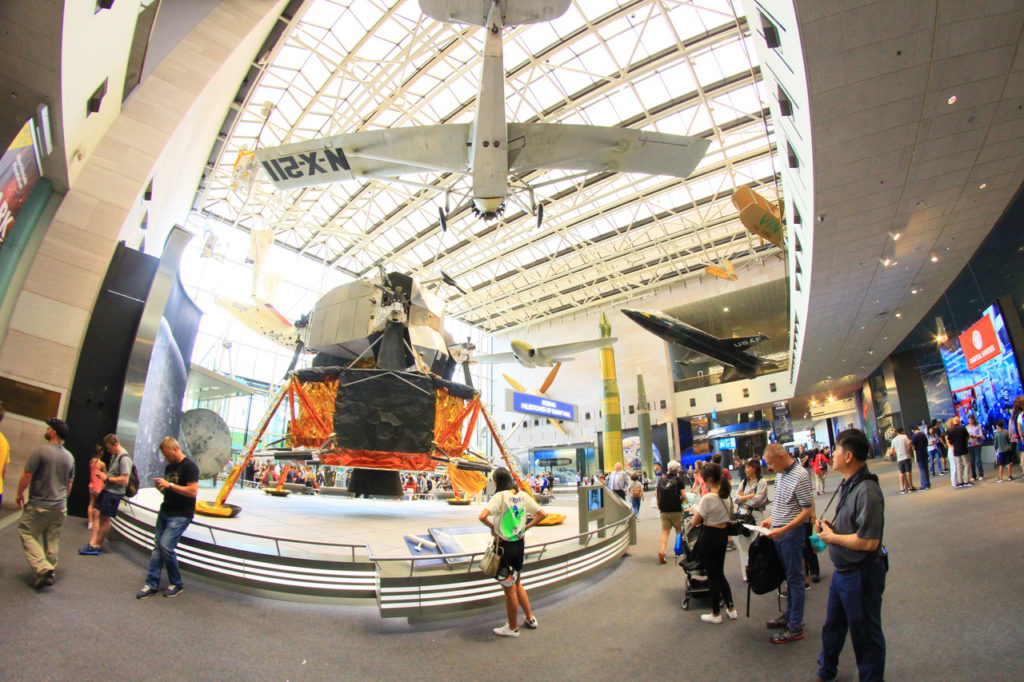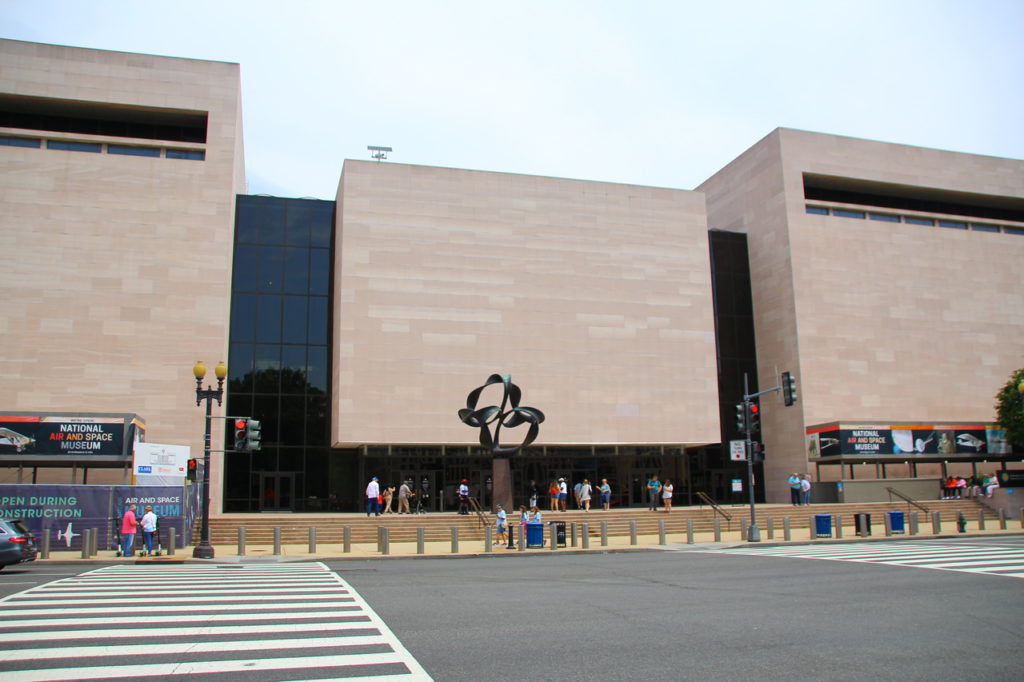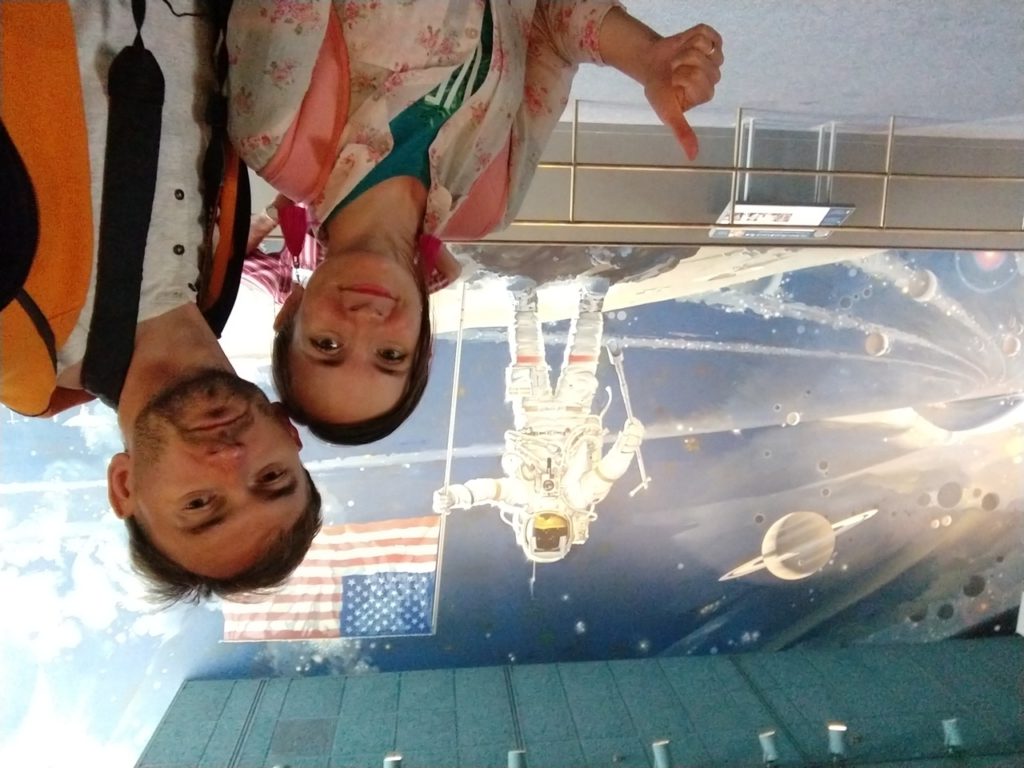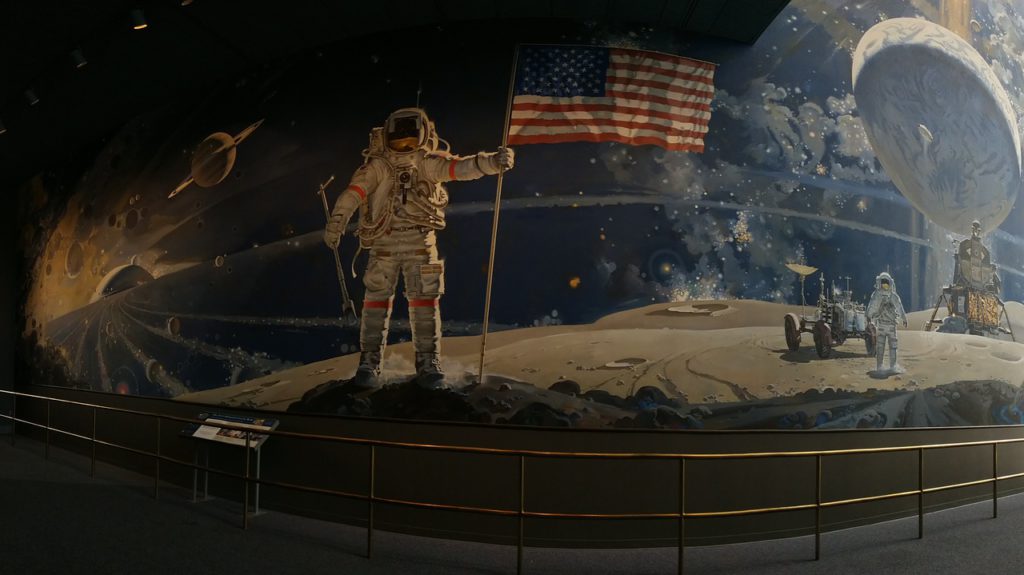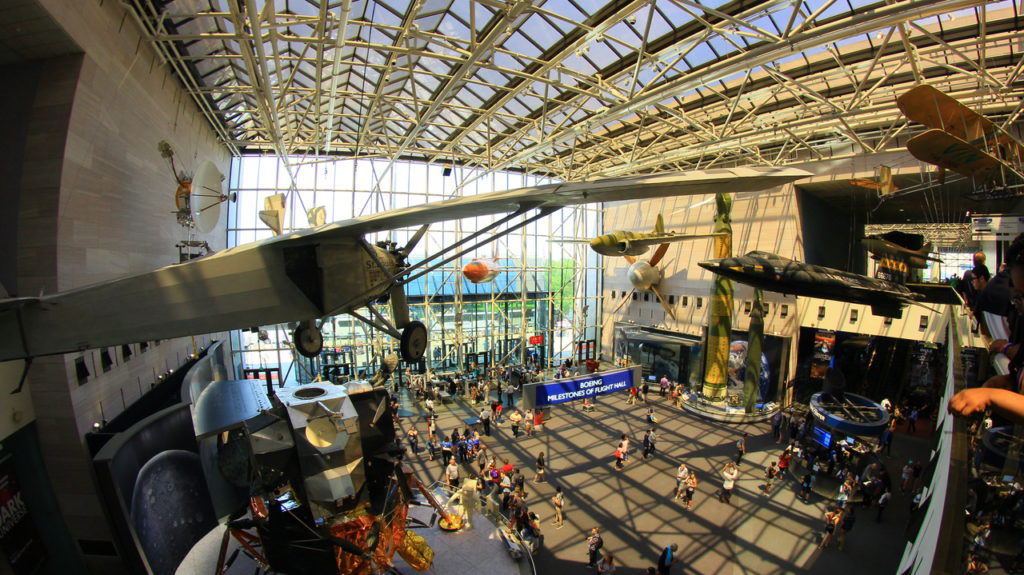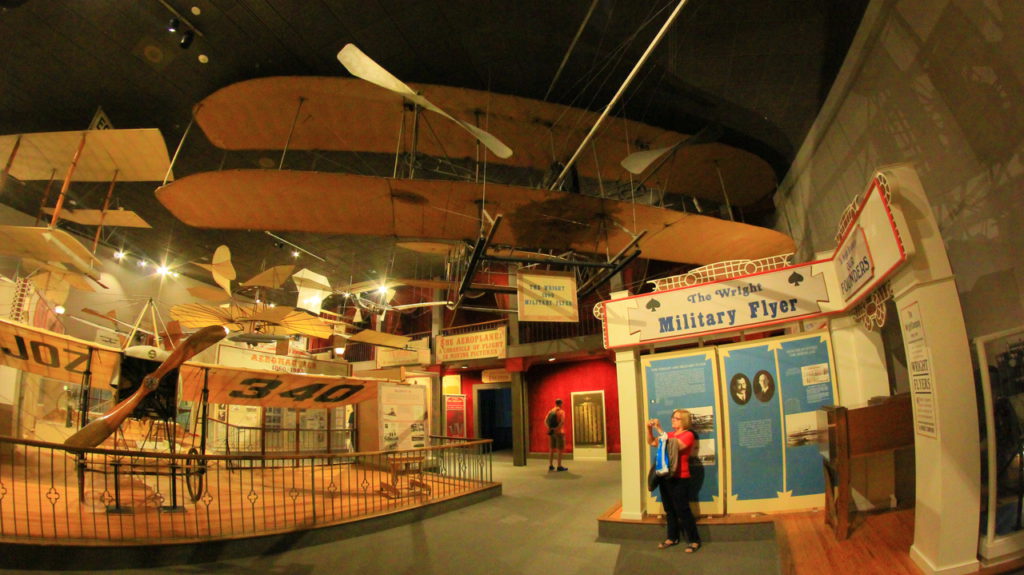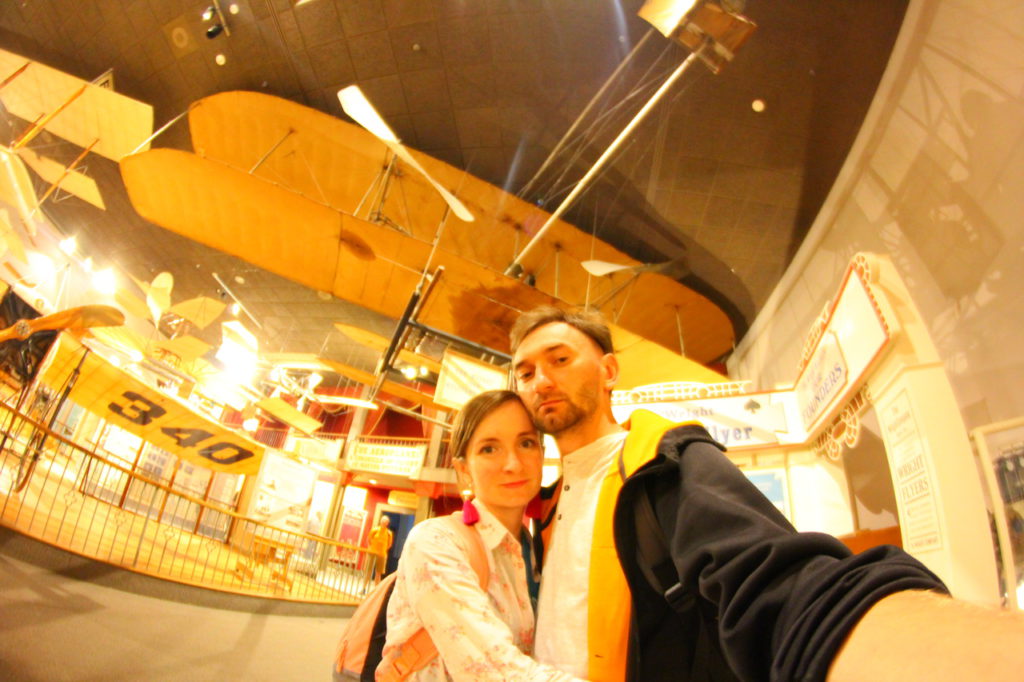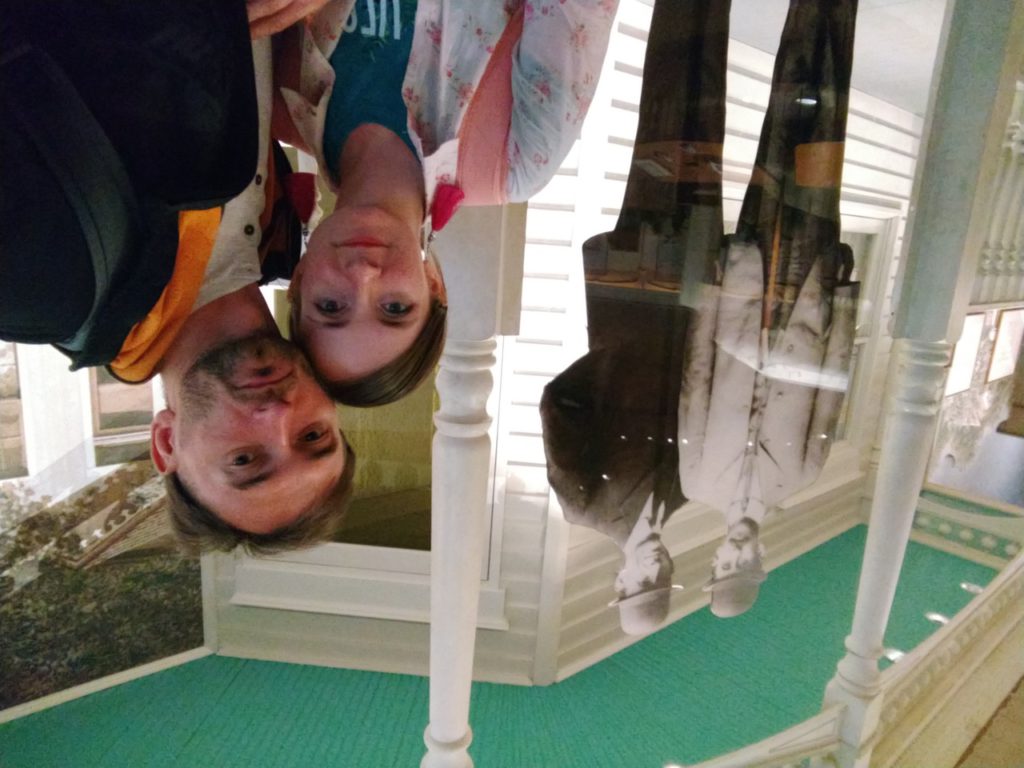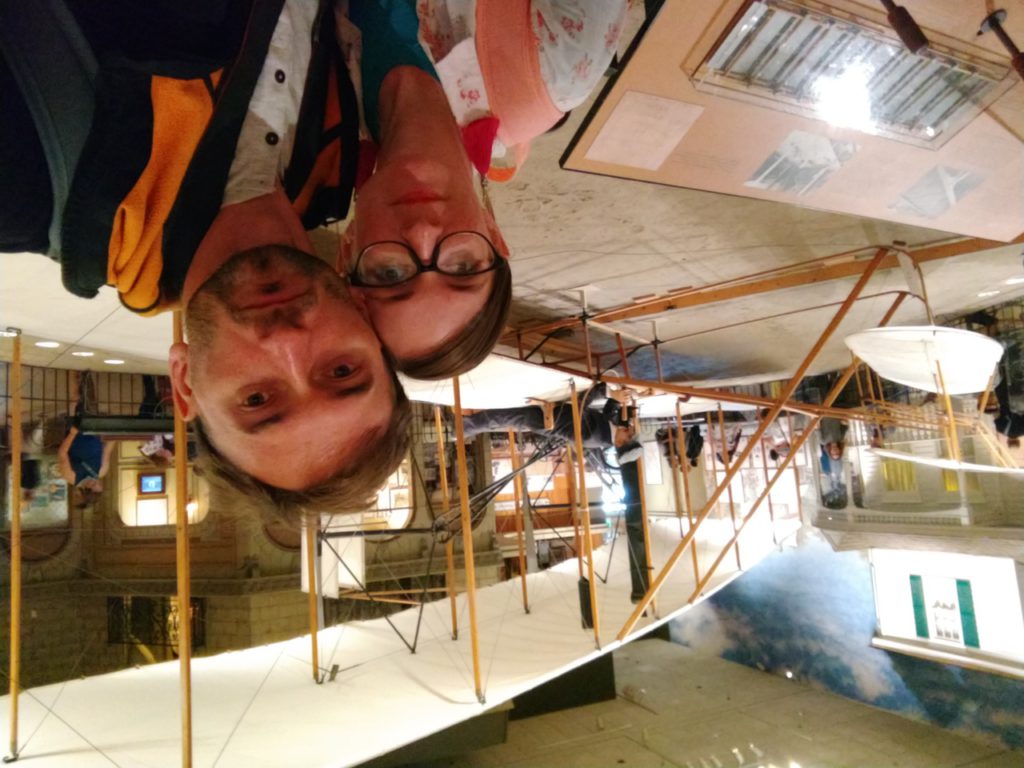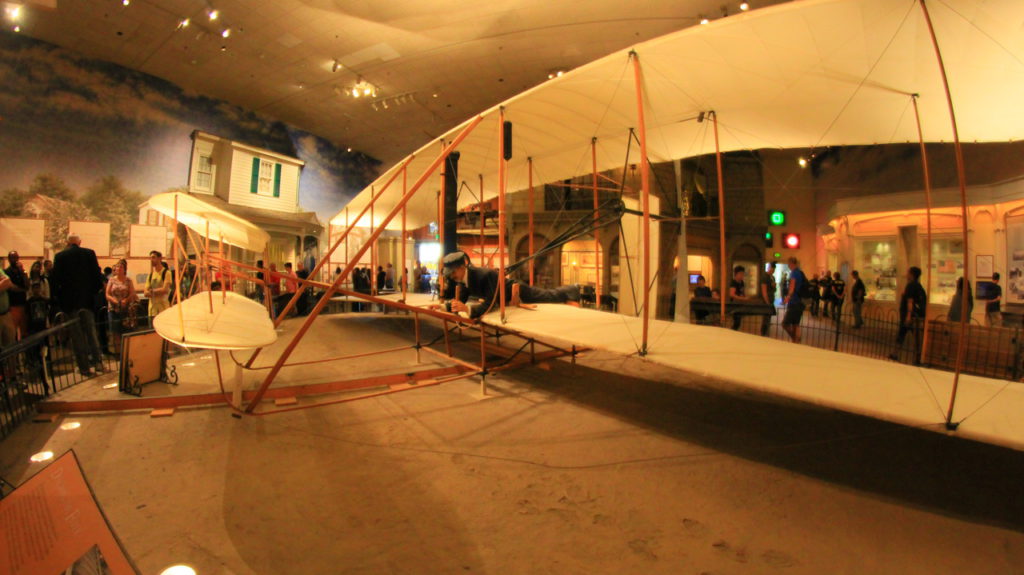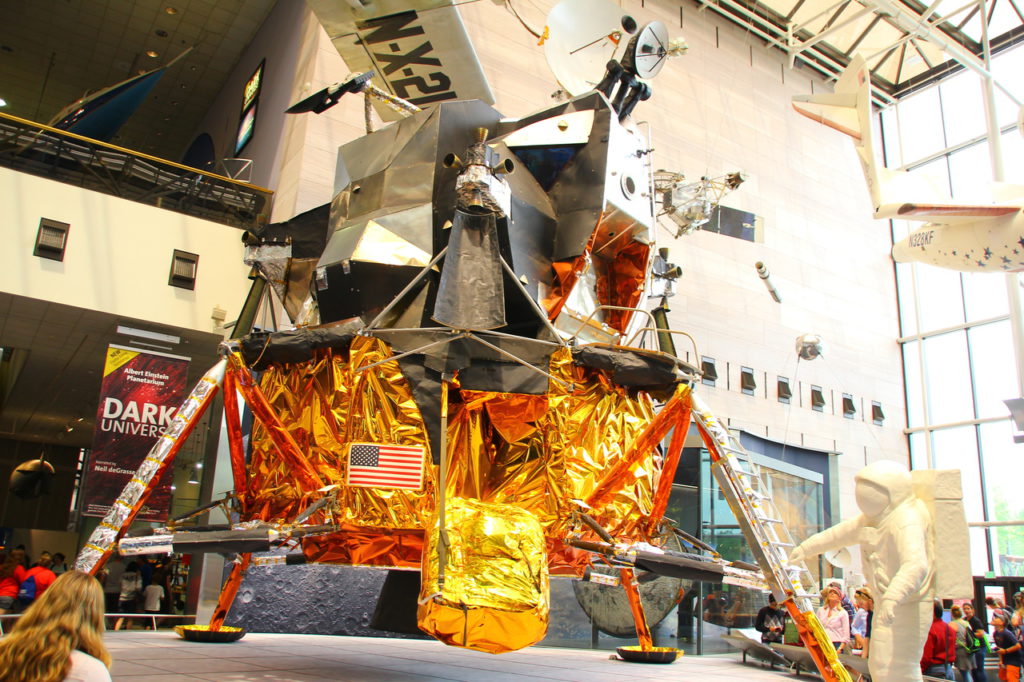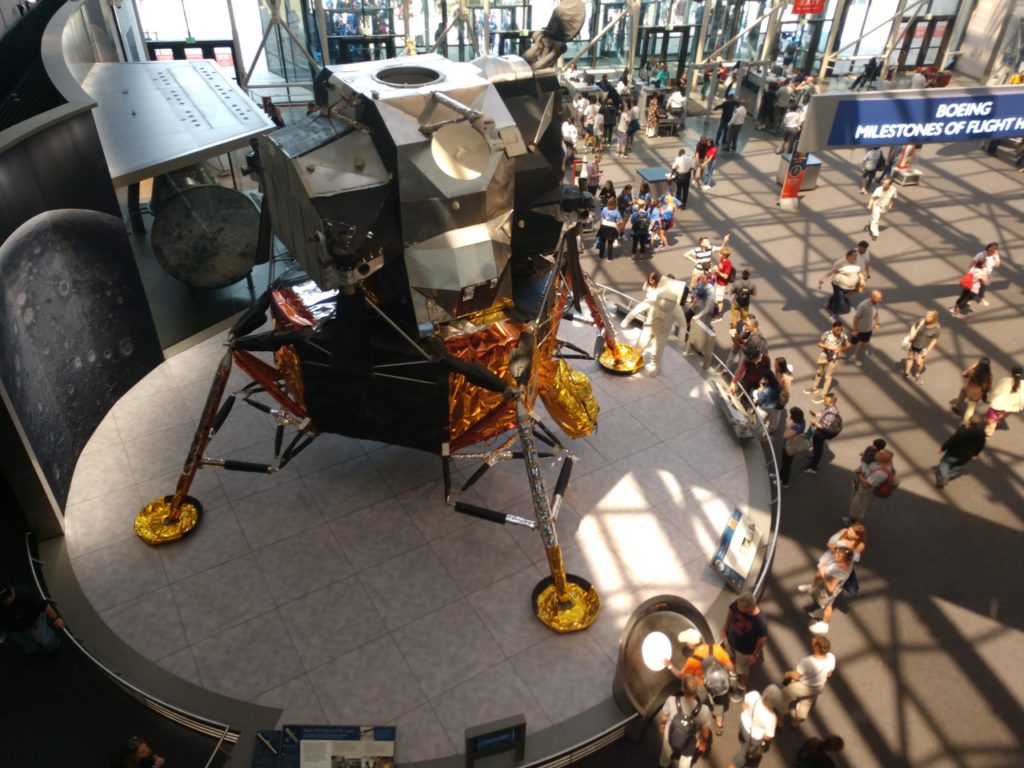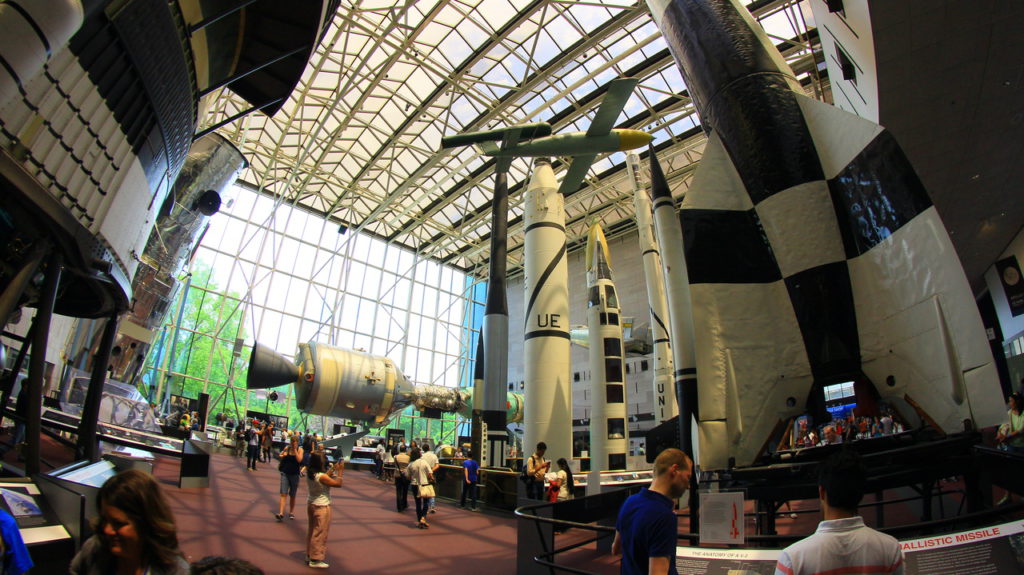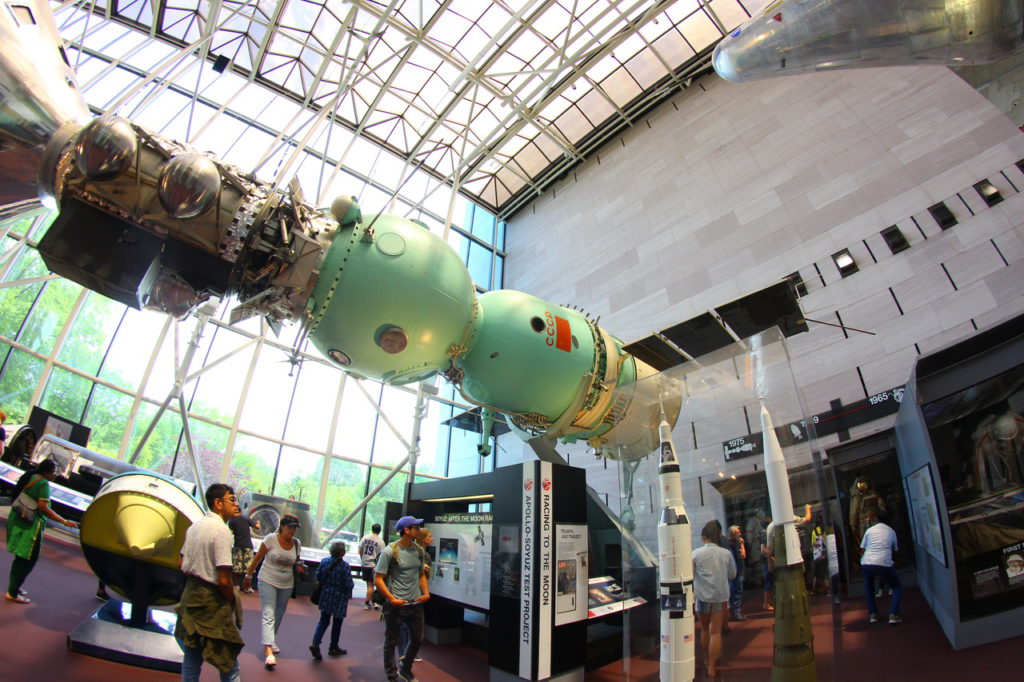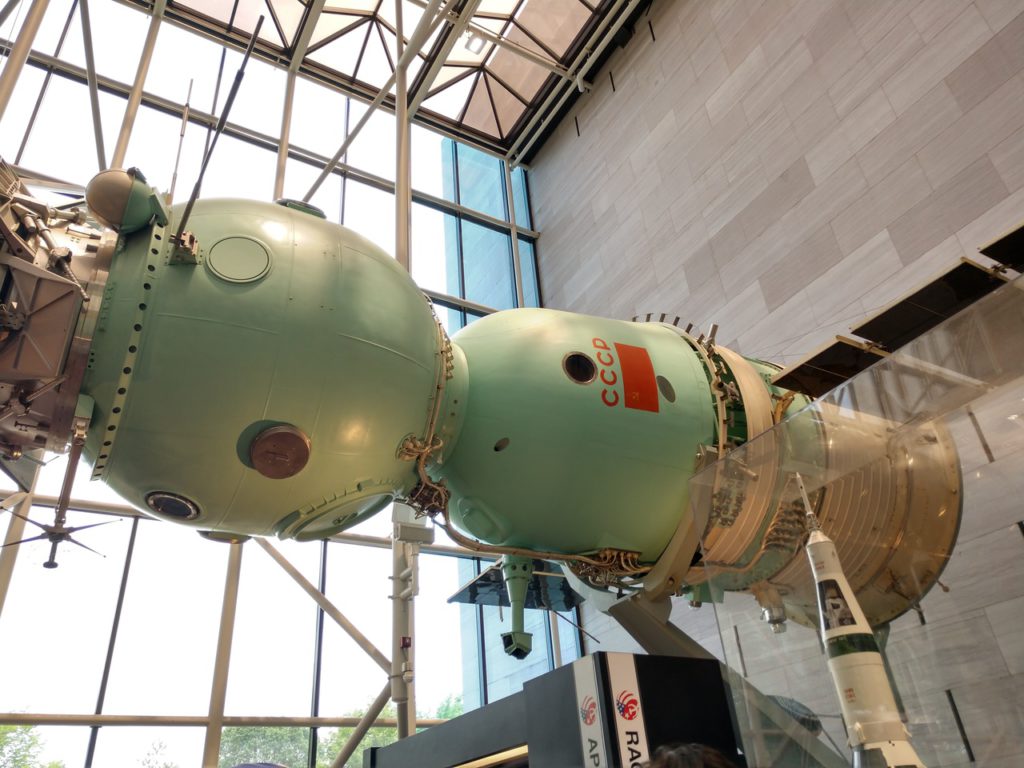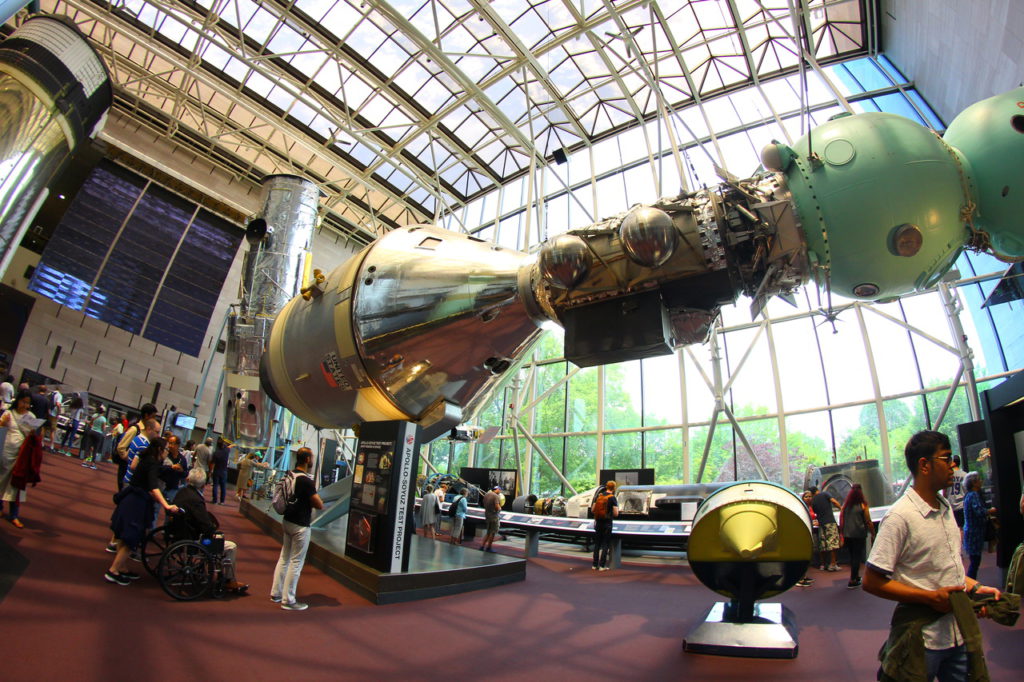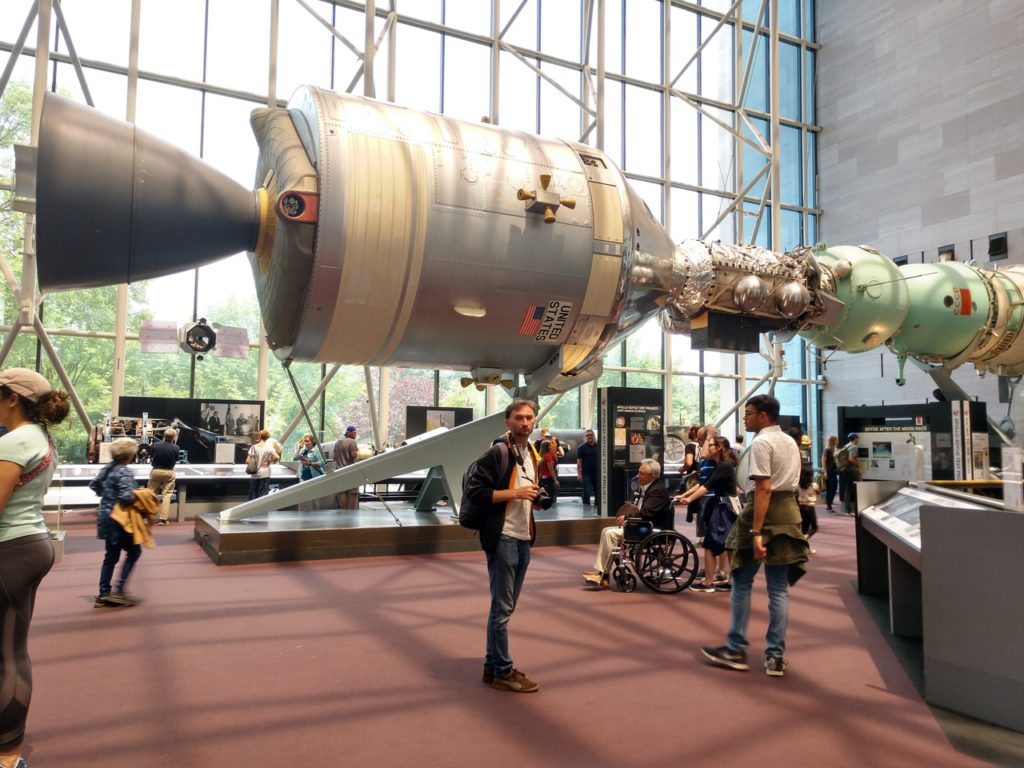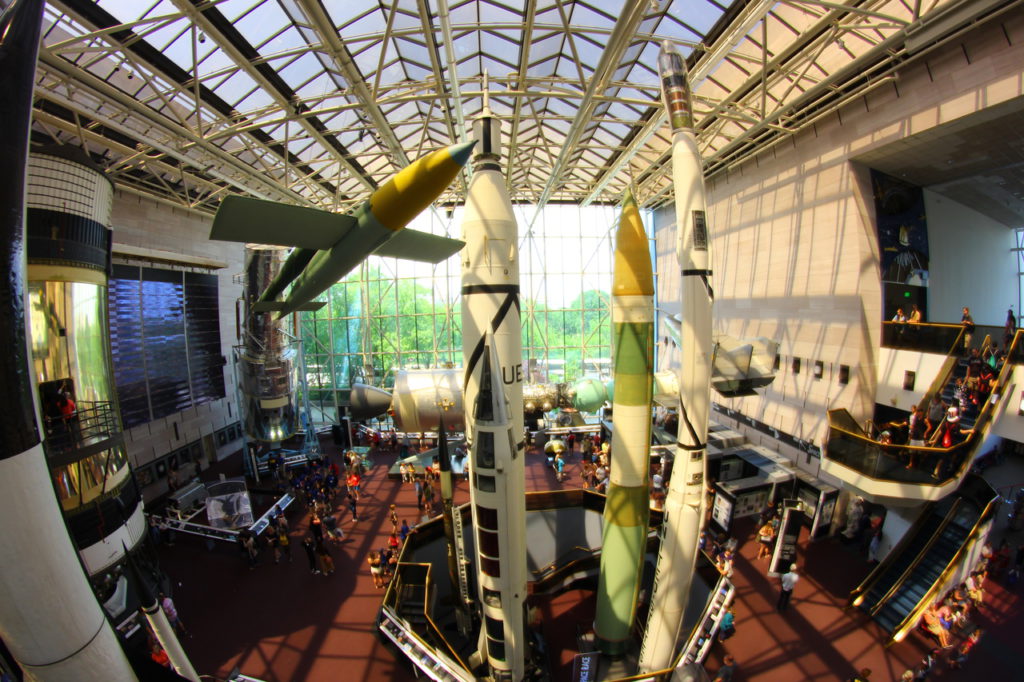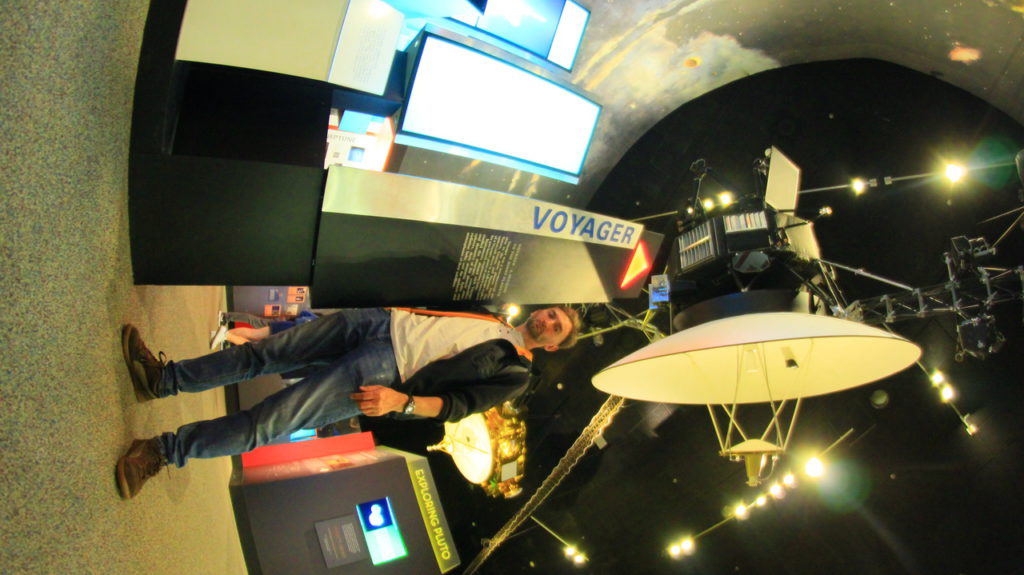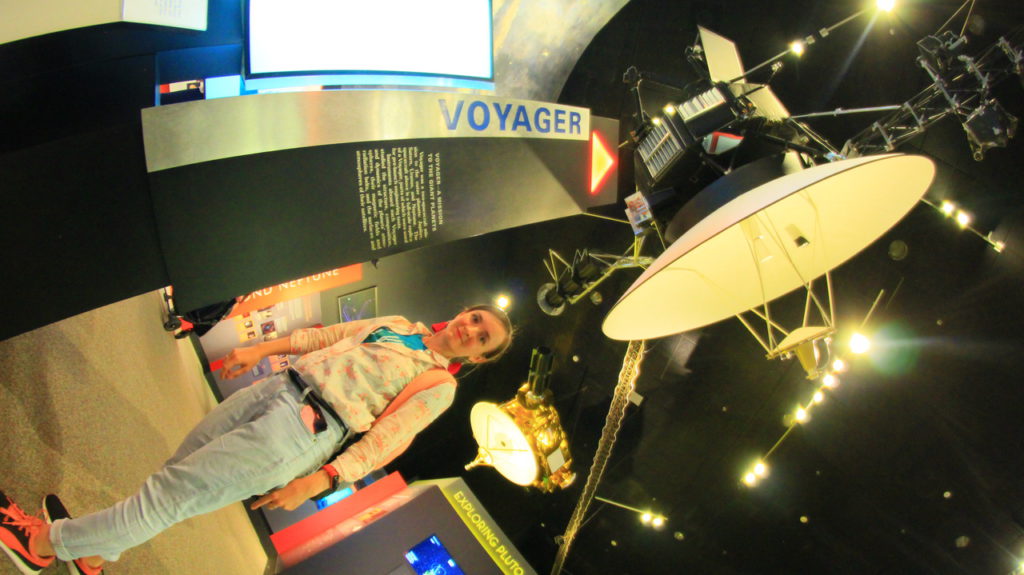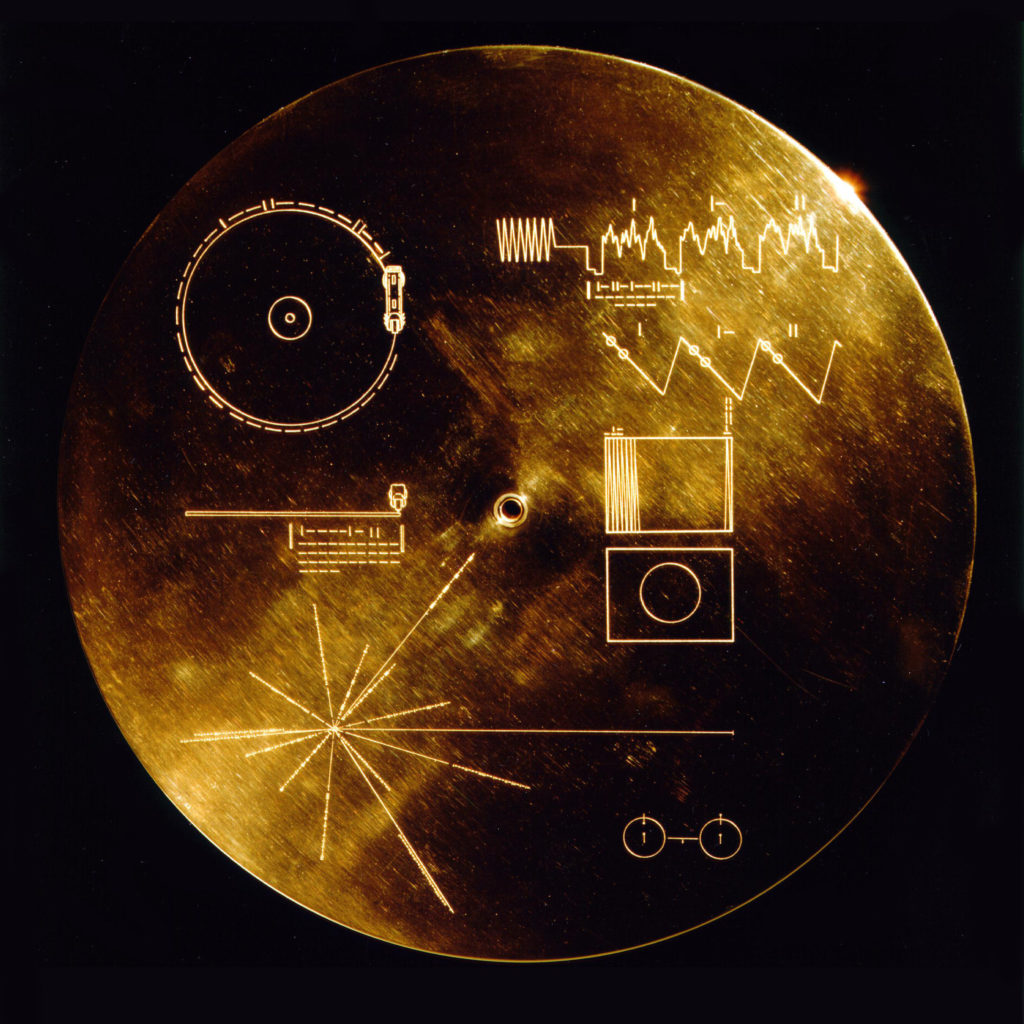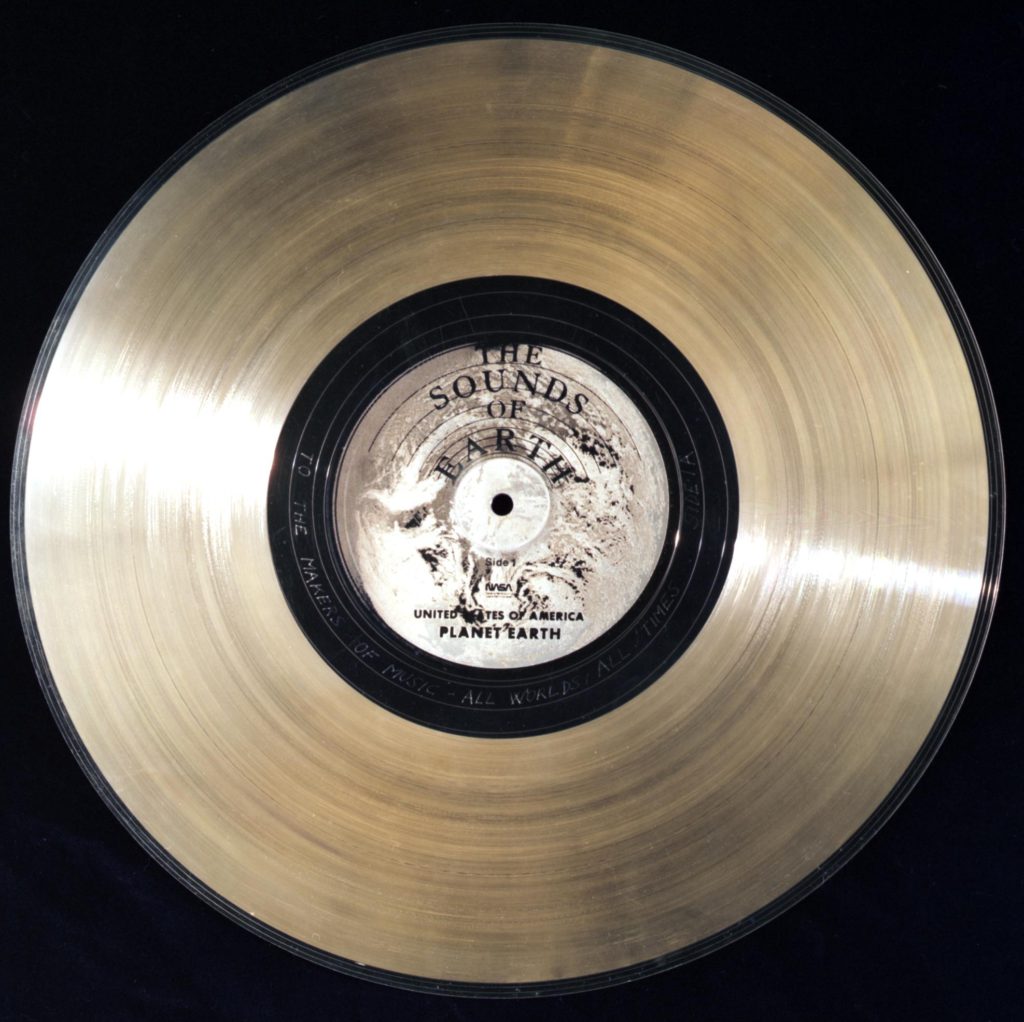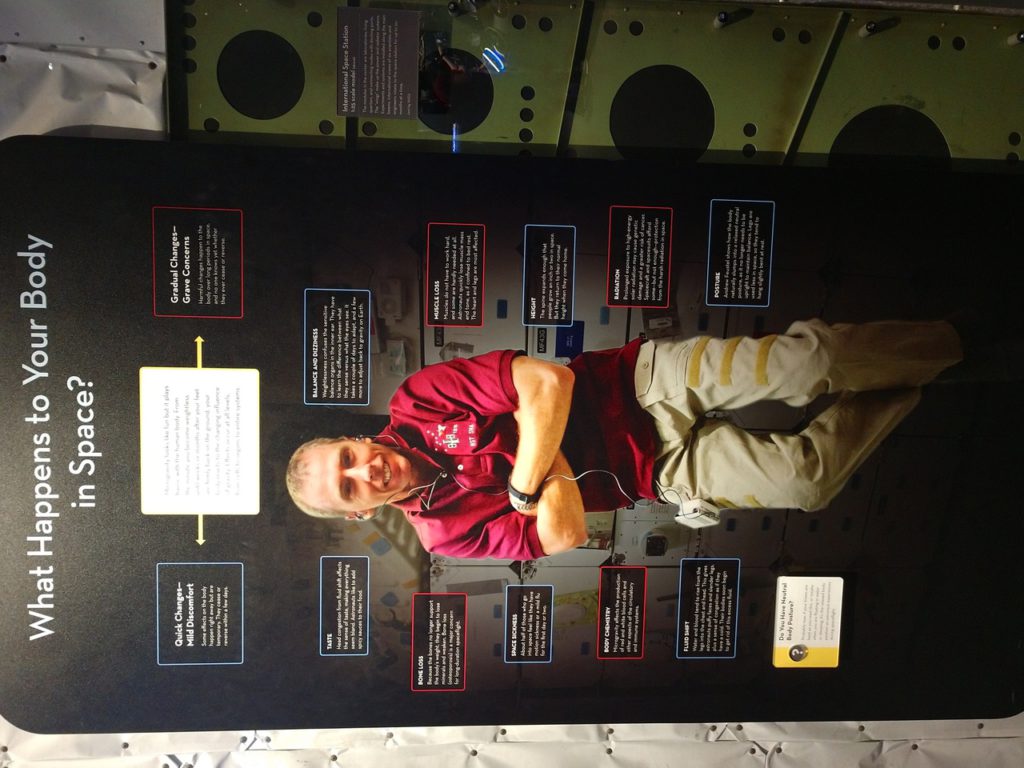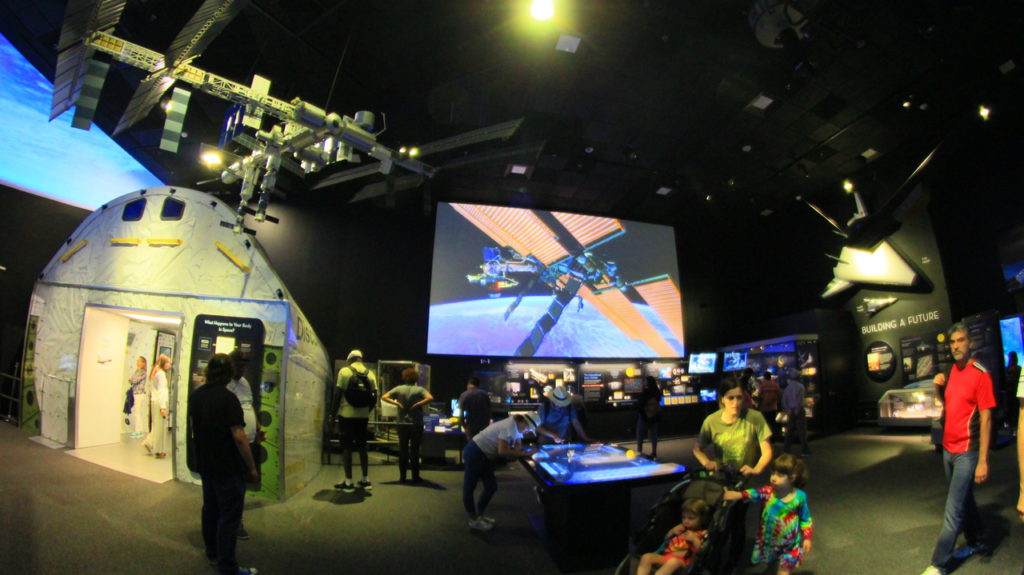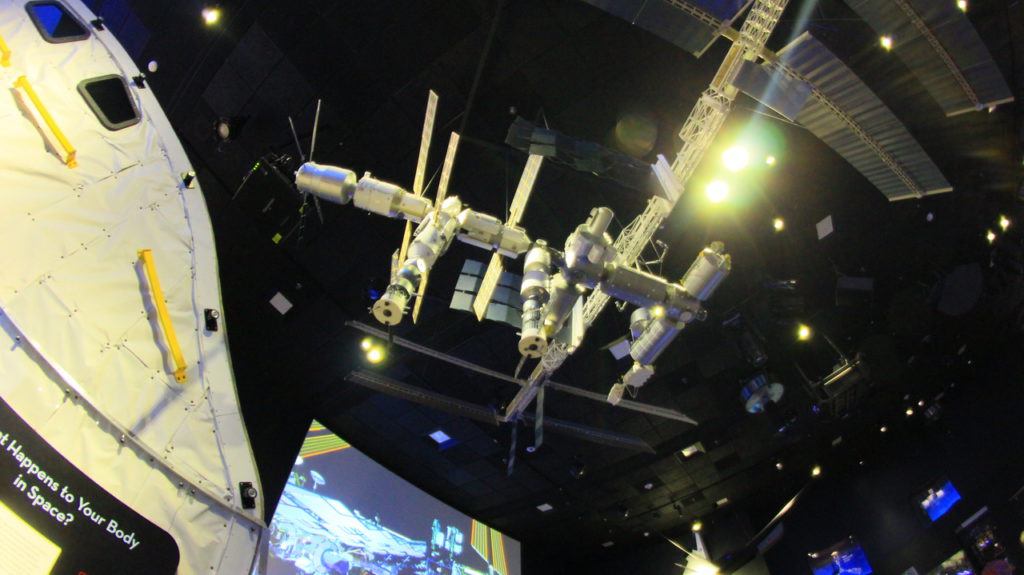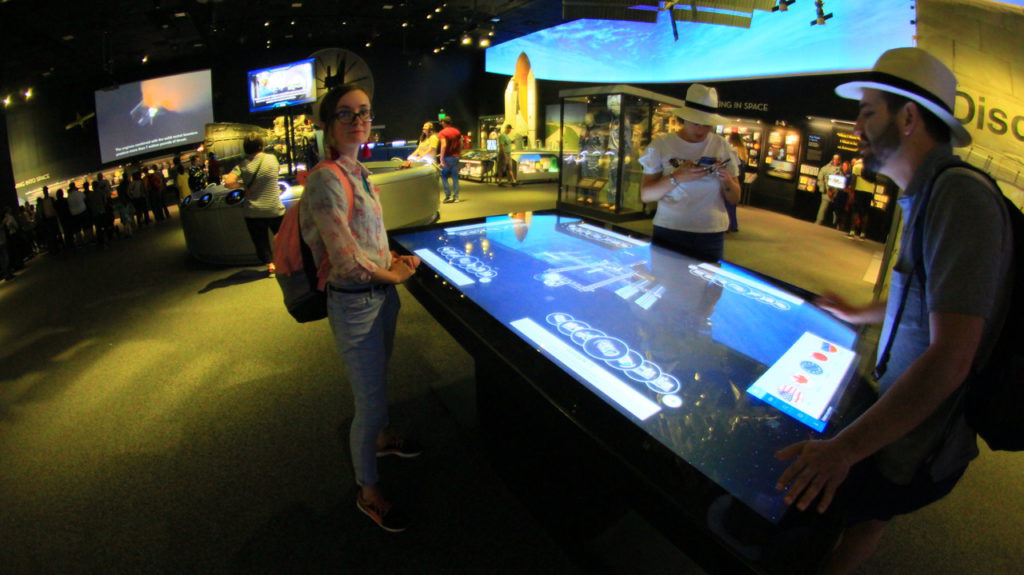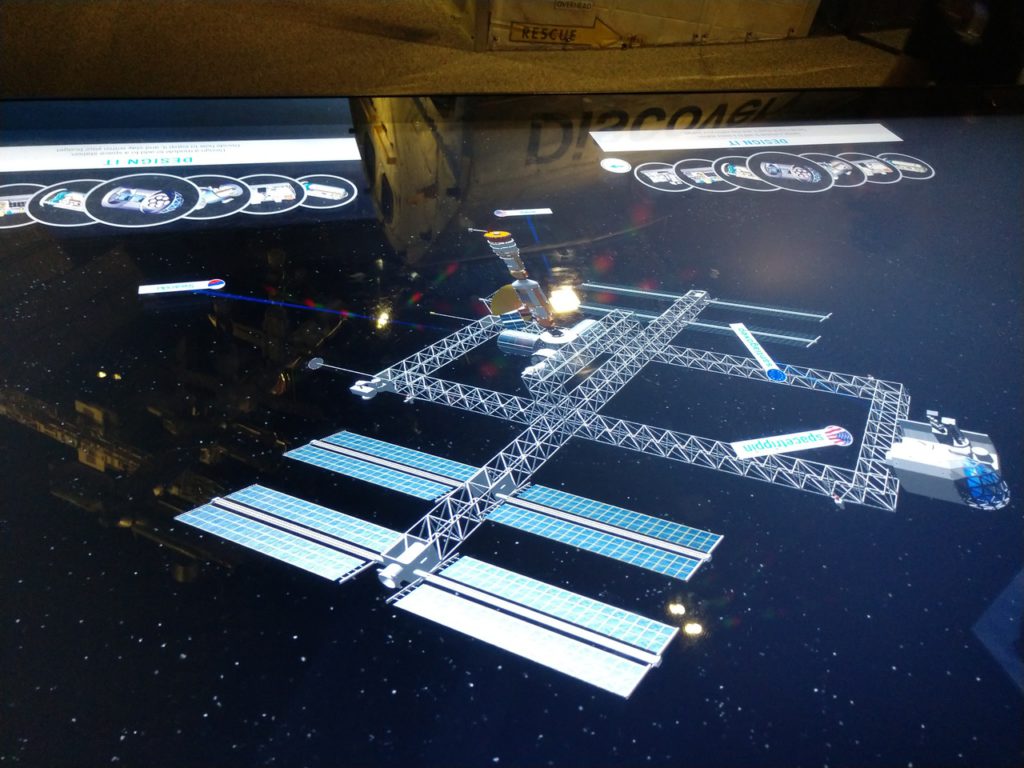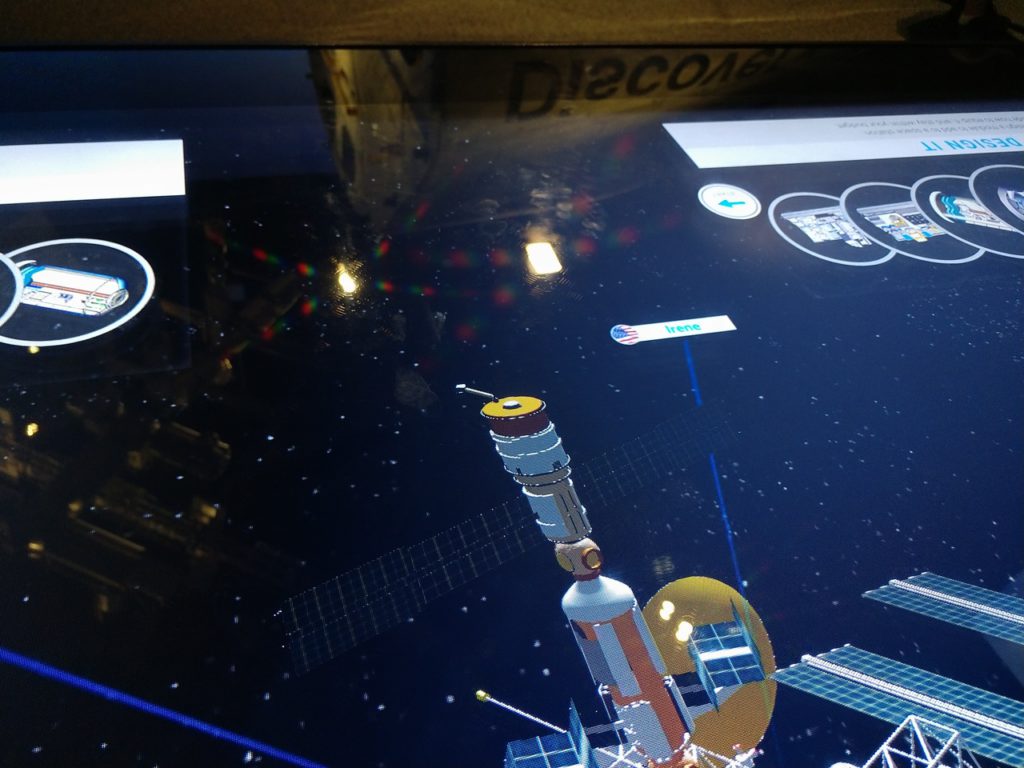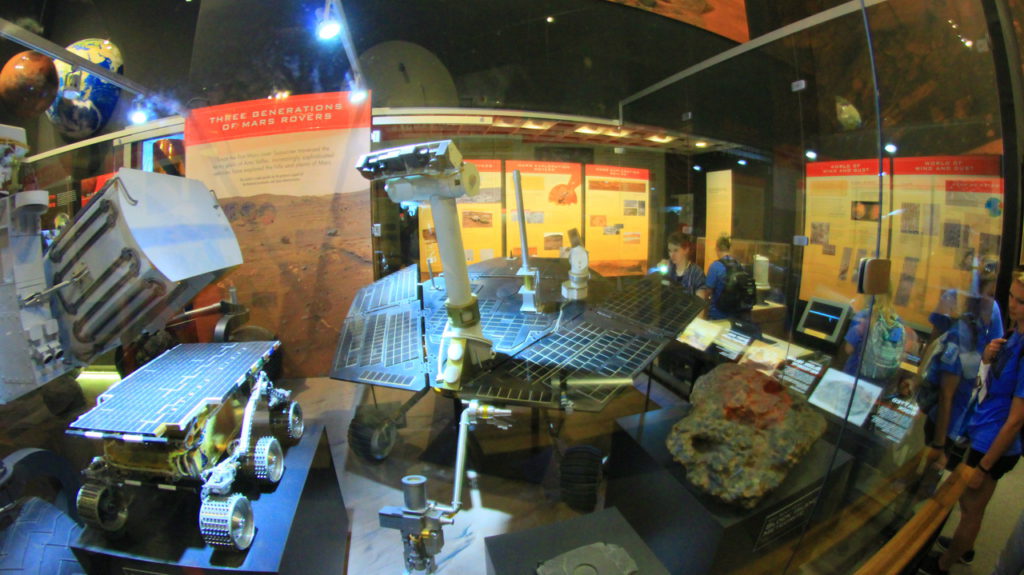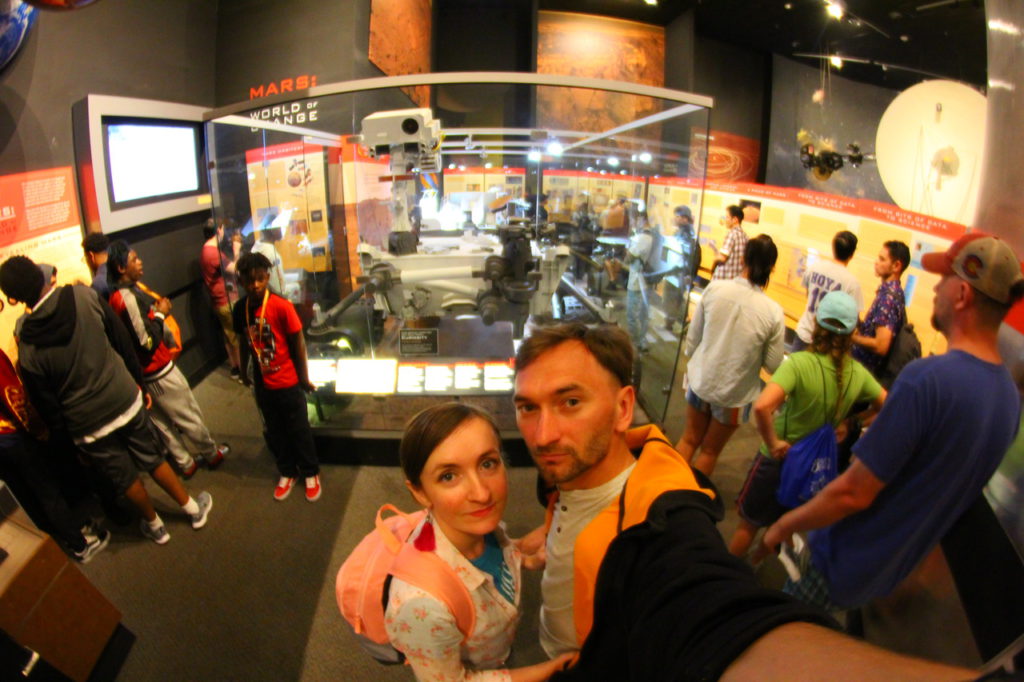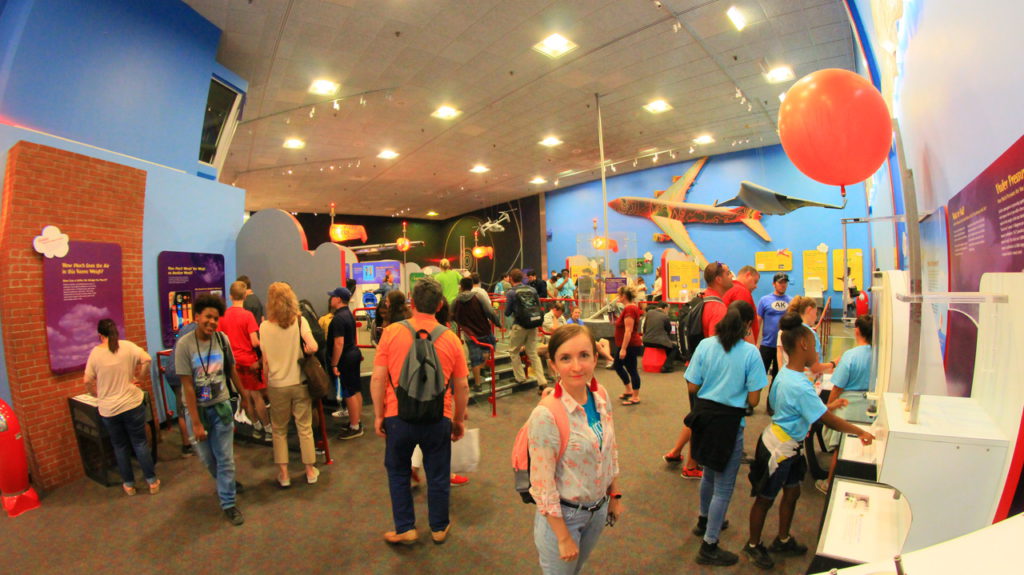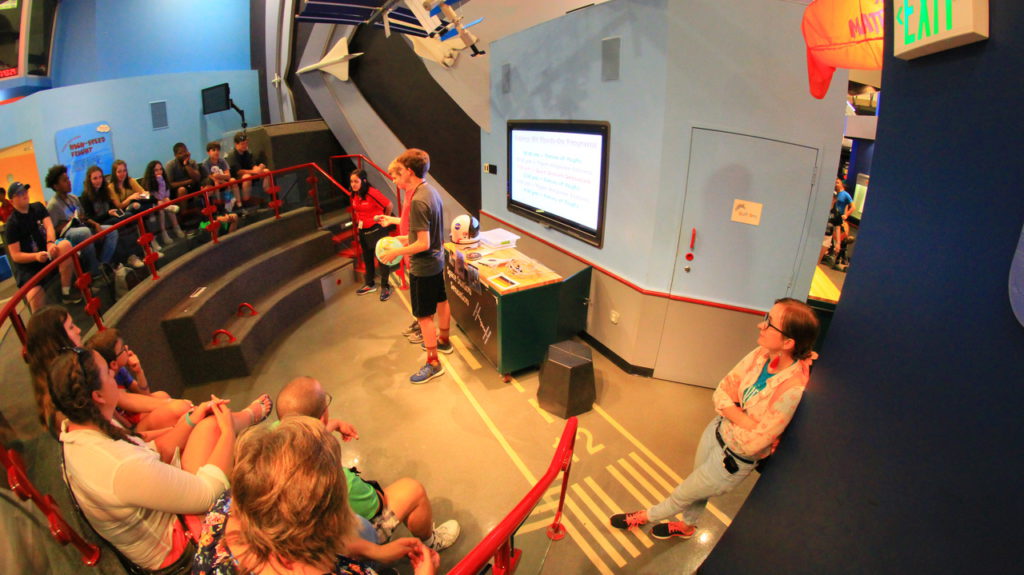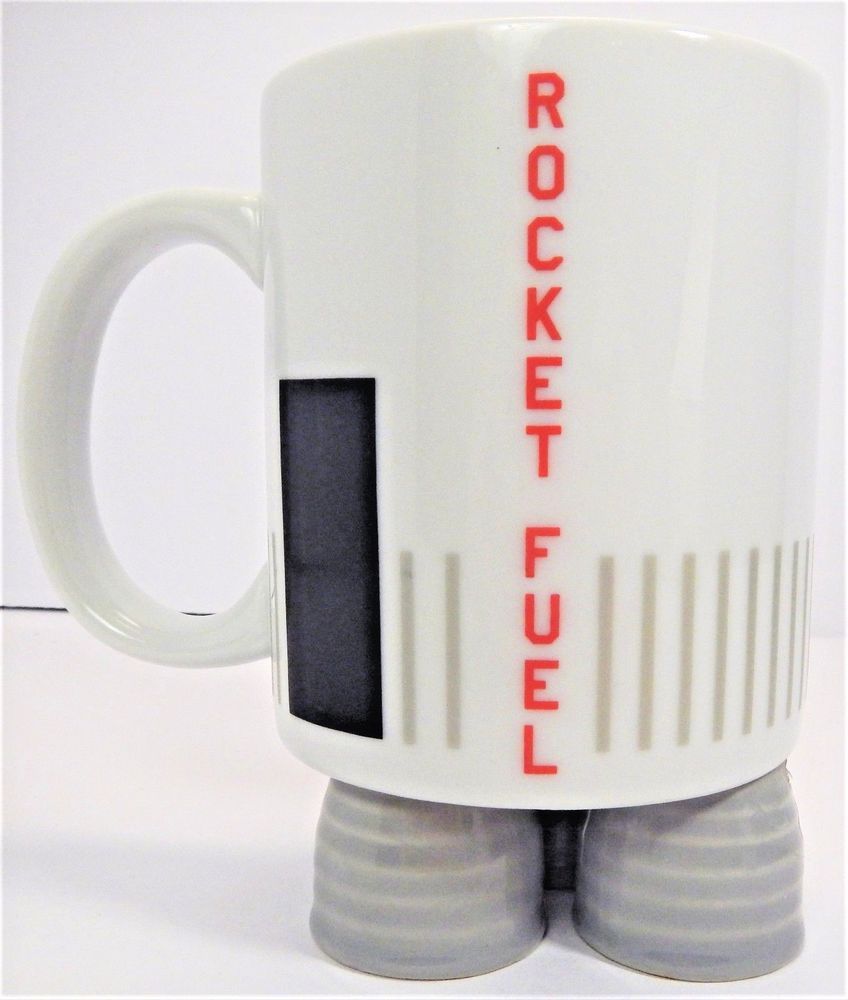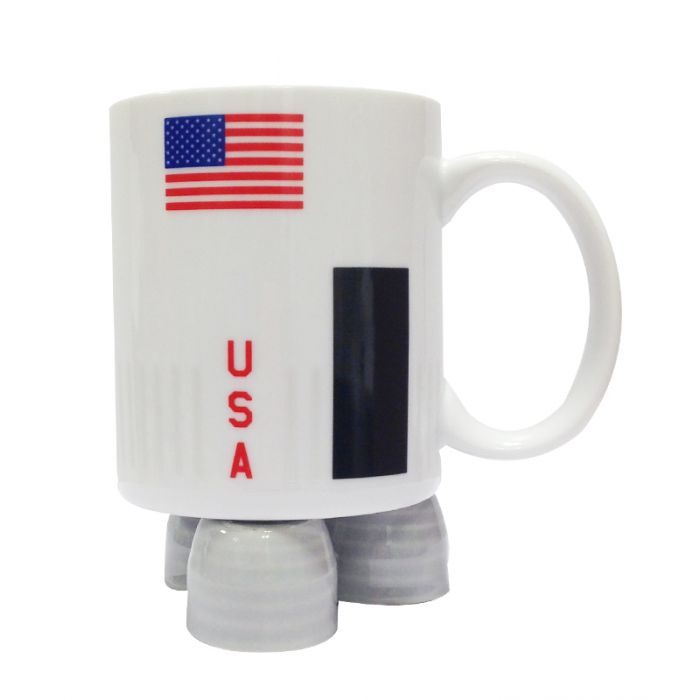The exhibits and related to them events in this museum, seemed to be usual for us before our visit. But later they obtained an important meaning and pushed us to think over some historical breakthroughs – their importance to humanity. What exactly impressed us so much?
Read our public below till the end.
Everyone will find something exciting in this museum: interesting exhibits, unusual space souvenirs that can not be found anywhere else, space simulators, by the way, we created our own virtual space module for the ISS on one of such simulators. And it will be interesting to know for the cinemagoers that the famous movie “Night at the Museum – 2” was filmed exactly here.
We spent 2 days in Washington. We visited the main attractions of the city on the first day (link to our video review in the description below). And we decided to see one of the Washington museums on the second day. There are many museums in Washington on various subjects and all of them belong to the Smithsonian Institution. As we really like everything related to space topic, we decided to visit exactly the National Air and Space Museum.
The museum is located on the National Mall alley, along with other Washington city attractions.
This museum contains the world’s largest collection of historical aircraft and spacecraft. Almost all exhibits of the museum are originals or their copies. This museum was founded in 1976 by the US Congress.
As it turned out, everyone can visit all the museums of the Smithsonian Institution for free.
As soon as we entered the museum, we dived in a whirlpool of a fascinating aviation and space history. Every next exhibit was more interesting than the previous one.
We begin our museum review with the original Wright brothers’ wooden plane called “Flyer”. They made the first controlled flight of a powered, heavier-than-air aircraft in the mankind history on this plane.
On December 17, 1903, the brothers Wilbur and Orville Wright took to the air and landed the Wright Flyer.
A lot of engineers tried to build their own aircraft on that period. There was a real competitive race in the field of aviation. But it was the Wright brothers, who were the first in history to make a successful flight with a pilot on motor-operated heavier-than-air aircraft.
Interesting to know that the first flight lasted only 12 seconds at the distance 37 meters (120 feet).
As inventors, constructors and pilots, the Wright brothers improved their aircraft, taught man to fly, and opened the aviation epoch.
Moving on… The next exhibit that we want to show you is the legendary lunar module of the Apollo-11 spacecraft expedition. On July 20, 1969, a first man made a step on the moon thanks to this space construction. This man was Neil Armstrong. When he stepped on the moon surface, he told a historical phrase:
“That’s one small step for a man, but one giant leap for mankind”
The documentaries tell how difficult this mission was. But it was a huge breakthrough in space exploration.
Nearby, in the same hall, there is another exhibit of world significance. Probably it even helped to avoid a global nuclear war. Apollo–Soyuz mission became a sign of agreement between the USA and the Soviet Union during the Cold War. In July 1975, the astronauts from the opposite sides shook hands in the orbit of the Earth – 220 km above the Atlantic. This was a very significant event in mankind’s history.
Also, the work of ISS astronauts today is based on those technologies, which were developed at that time. This event meant the beginning of international cooperation and research.
The next hall is dedicated to the planets of the solar system,
and behind it we saw a copy of the American spacecraft Voyager.
Voyager-1 is the first and the only spacecraft, which reached the boundaries of the solar system and went beyond it. None of man-made devices hasn’t gone so far yet. There were 2 such devices: Voyager-1 and Voyager-2. They are highly autonomous robots equipped with scientific instruments, their own power installation, rocket engines, computers, radio communication and control systems.
Back in 1977, Voyager-1 and Voyager-2 were launched into space in order to study the distant planets of the solar system, and one of these devices is still working. Humanity has got high-quality images of Jupiter, Saturn, Uranus, Neptune with the help of Voyager robots.
An interesting fact is that there is a gold plate on the board of each Voyager. This plate contains scientific data in different fields of human life, sound recordings, some musical works and a message. Perhaps some civilization will catch the Voyager device and will find out about the existence of our civilization.
By the way, on the NASA website you can see what exactly is recorded on this disc.
And now we will show you the hall that we liked the most. This hall is dedicated to the International Space Station (ISS).
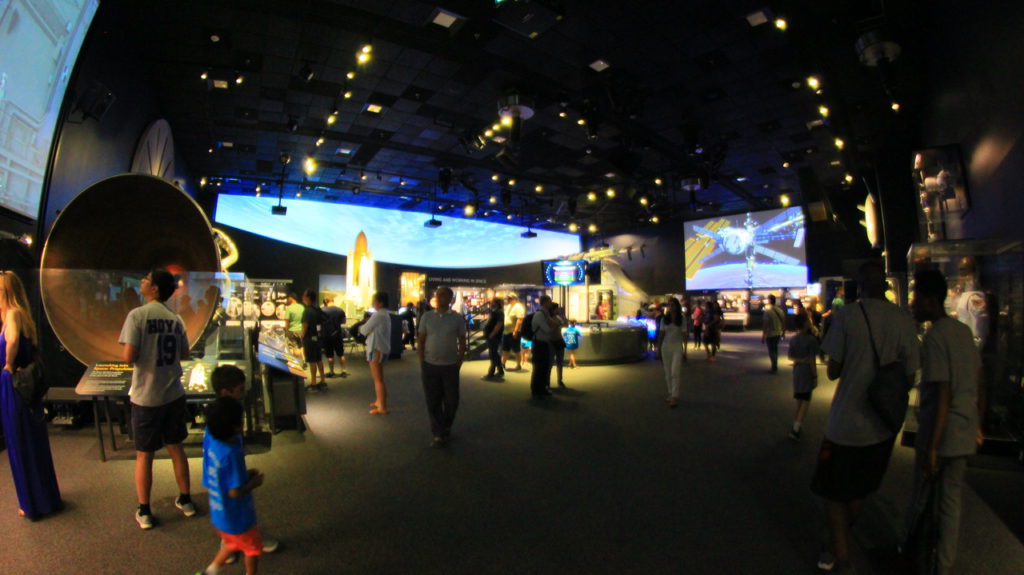 Back in the 1980s, major countries decided to build together a space station in Earth orbit. And only in 1998 the first module was launched into orbit. New modules have been being added to the space station since that time until now.
Back in the 1980s, major countries decided to build together a space station in Earth orbit. And only in 1998 the first module was launched into orbit. New modules have been being added to the space station since that time until now.
A multi-national team on board of the space station undertakes numerous studies for the benefit of all mankind. Thanks to experiments on the ISS, scientists learned a lot about our planet, enriched knowledge in the field of physics and biology (in particular: the effect of microgravity on the human body in space). The results of these studies play a huge role in preparing for future piloted missions to Mars and another space expeditions.
In this hall everything is connected with the ISS, as well as the life and work of astronauts at the station.
Visitors can test lots of interactive panels and space simulators.
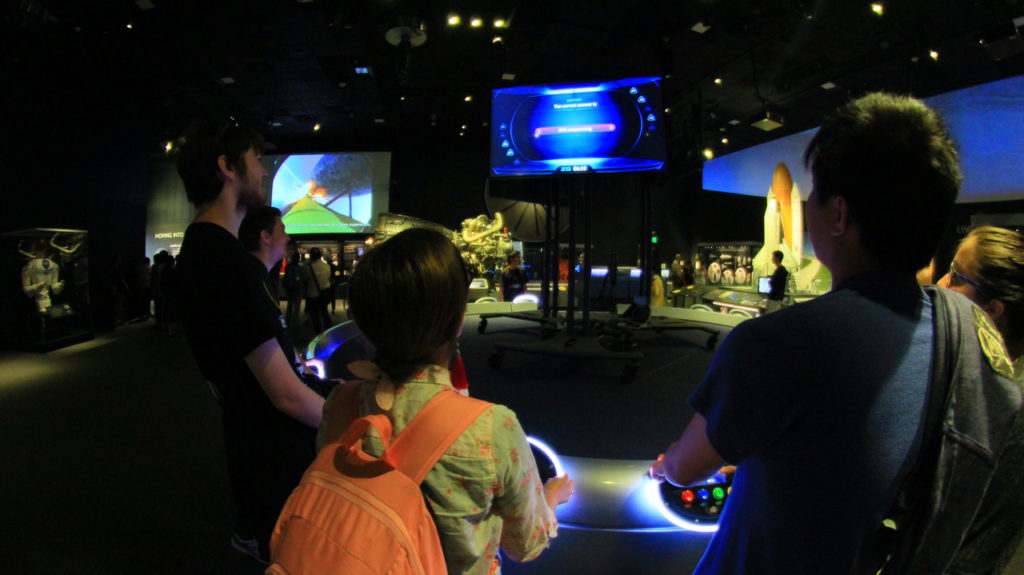 And also, can you imagine, the museum has an installation for designing virtual modules for the ISS. As soon as we got into the process, we managed to design our own virtual space module. We chose the module class with a specific purpose, its combination: where the sleeping and the working areas will be located. We set the name to the module and virtually connected to the ISS.
And also, can you imagine, the museum has an installation for designing virtual modules for the ISS. As soon as we got into the process, we managed to design our own virtual space module. We chose the module class with a specific purpose, its combination: where the sleeping and the working areas will be located. We set the name to the module and virtually connected to the ISS.
It is amazing! We felt like we were involved in the arrangements of the legendary space station.
Also in this hall of the museum there is a room equipped as in the Discovery shuttle. You can go there, look into the boxes with the things of everyday life of the astronauts (tubes with food, various devices).
It would be great to visit the ISS. Perhaps it will become a reality for space tourism in the near future. Probably such space trips will require some physical training. But who knows, maybe a flight on an excursion to the ISS will become as real as flying today, for example, to another continent.
A lot of visitors are concentrated near the famous Mars rovers. And here is a copy of the American research rover “Curiosity”, which continues to work even nowadays.
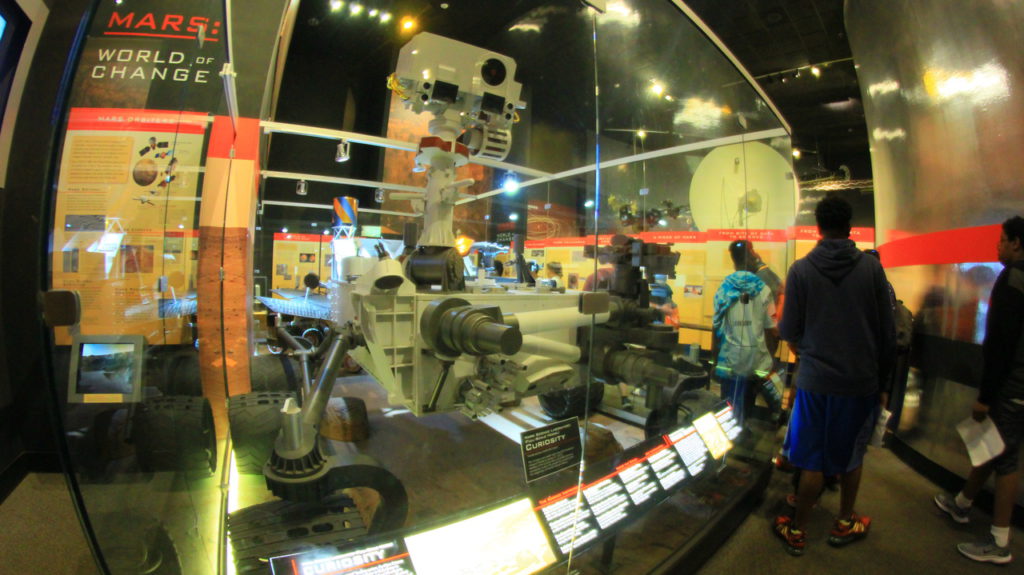 Devices on Mars are able to function autonomously for some time according to the laid down programs. They receive commands only from time to time. Mars rovers, unlike moon rovers, cannot be controlled remotely, because the delay of signals can reach 20 minutes depending on the relative position of the Earth and Mars.
Devices on Mars are able to function autonomously for some time according to the laid down programs. They receive commands only from time to time. Mars rovers, unlike moon rovers, cannot be controlled remotely, because the delay of signals can reach 20 minutes depending on the relative position of the Earth and Mars.
These devices carry out a very important mission. Scientists plan to use the Mars rover as a platform to study the conditions for building an inhabited base on the surface of Mars. Spirit and Opportunity are among the most famous Mars rovers which were also successfully landed on Mars for scientific research.
We really liked that the museum is interactive. The visitors can test various kinds of control panels, experimental stands and space simulators.
Children also will not be bored in this museum. There is a separate room with different fascinating experiments for young visitors.
By the way, the famous film Night at Museum-2 was shot in this museum with Ben Stiller in the main role. It was very interesting for us to watch this film and see many familiar places and exhibits there. It seemed like we visited the museum again.
The first part of this film was shot in New York at the National Museum of Natural History, which we were also lucky to visit. We have a video review of this museum – link in the description).
There is a store in the National Air and Space Museum. The visitors of the museum can buy very unusual souvenirs there.
For example, real food of astronauts (dried fruits, ice cream, sandwiches),
such cool cups with the inscription “Rocket fuel”
And also there are appropriate t-shirts for those, who at least once dreamed of feeling like an employee of the legendary NASA space agency.
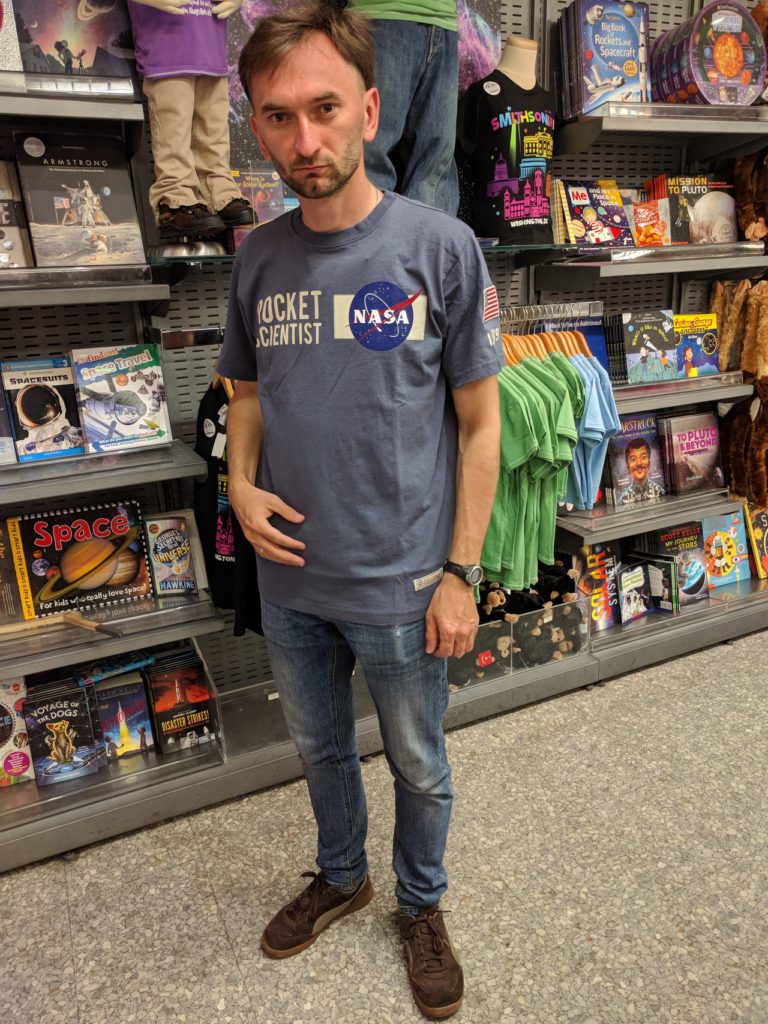 There is a small dining room where you can have a snack after an active day at the museum.
There is a small dining room where you can have a snack after an active day at the museum.
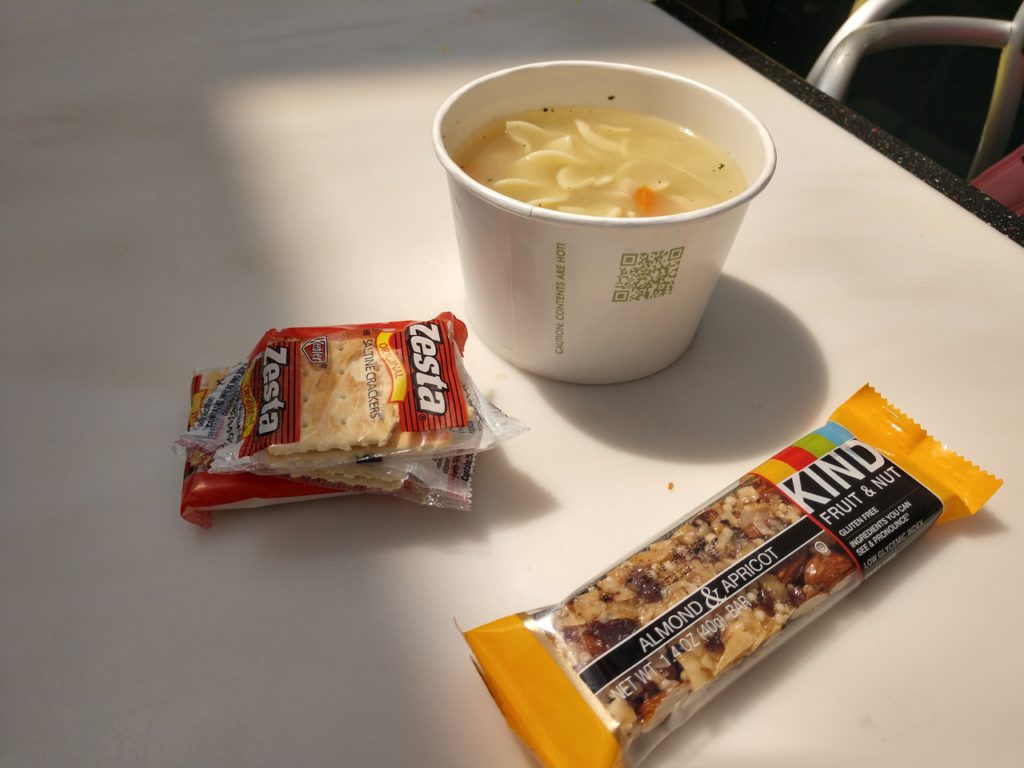 We hear about experiments on the ISS in the news almost every day: the launch of space rockets, space exploration, Mars terraformation. And usually all these things seems to be something faraway, and not related to our real life. But in this museum we had the opportunity to see how everything happens from the inside out, to feel involved in the great historical events, to explore the evolution of the aviation industry, space research facilities which mean a great achievement for the whole humanity. Thanks to all of these discoveries, valuable historical exhibits, visitors of the museum can follow how humanity has been transformed from the land type into the flying types and later – into the space one.
We hear about experiments on the ISS in the news almost every day: the launch of space rockets, space exploration, Mars terraformation. And usually all these things seems to be something faraway, and not related to our real life. But in this museum we had the opportunity to see how everything happens from the inside out, to feel involved in the great historical events, to explore the evolution of the aviation industry, space research facilities which mean a great achievement for the whole humanity. Thanks to all of these discoveries, valuable historical exhibits, visitors of the museum can follow how humanity has been transformed from the land type into the flying types and later – into the space one.
Working on the ISS in low Earth orbit, traveling to asteroids or flying to the moon – all this helps to improve technologies that will make space tourism real, hotels in low Earth orbit and the moon, cruises on the solar system. And as a result these superior technologies will bring a human to Mars to carry out the terraformation. And Mars will become the second inhabited planet where life will be possible. We’ll see how far humanity will go …
Author (c): Iryna Melnyk
Photos (c): Nick Melnyk

